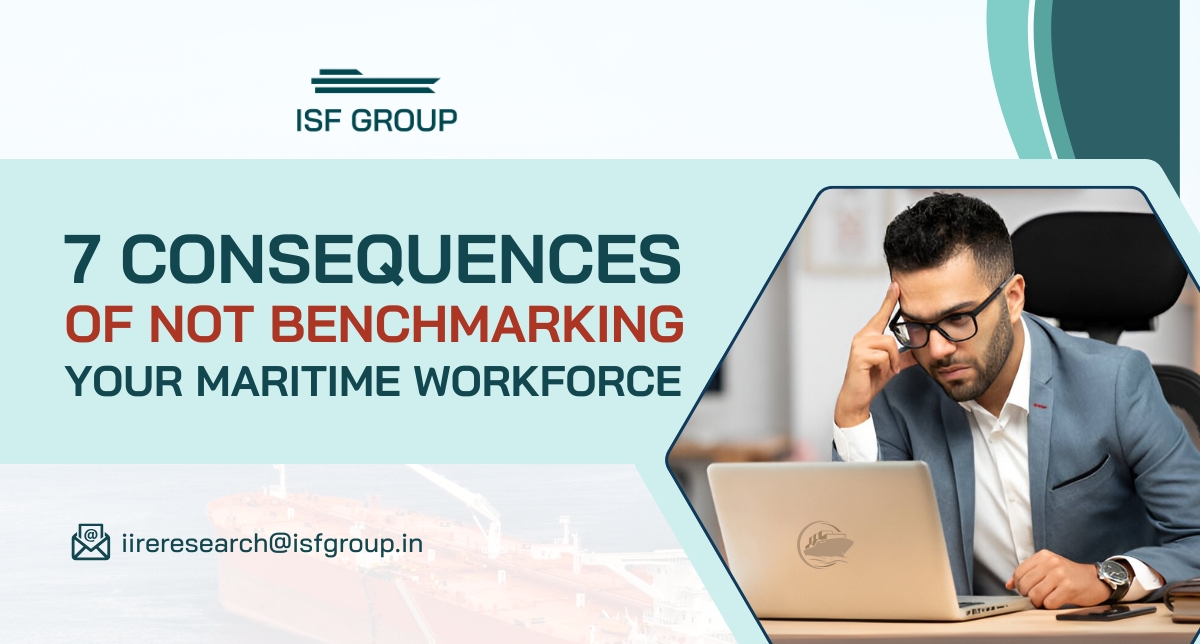The Risk of Inaction: What Happens When You Don’t Benchmark Your Maritime Workforce

In the dynamic and demanding world of maritime operations, one thing is universally true: your people are your biggest asset. Whether you're managing a fleet of tankers or crewing bulk carriers, your seafarers directly impact safety, performance and profitability.
But how do you know if you’re managing your crew resources wisely?
More importantly, how do you know if you’re paying them fairly, retaining the right talent and staying competitive in the market?
The short answer: you benchmark.
And the longer truth? If you don’t, you’re taking a serious risk.
Let’s explore what happens when shipping companies don’t benchmark their maritime workforce and why doing nothing is no longer an option.
1. You May Be Overpaying Without Realizing It
Many companies believe that paying higher-than-average wages helps them retain talent and build loyalty. But here's the reality: if you're overpaying compared to industry norms, you may not actually be gaining any advantage.
Why? Because:
- Loyalty doesn’t come from salary alone. It comes from fair treatment, career growth and work-life balance.
- Overcompensation drains budgets that could be better invested in training, mental health support or safety innovations.
- You could be creating internal wage disparity that leads to friction between crew members.
Benchmarking tells you whether you're spending wisely or overspending. Without it, you’re navigating your HR budgets without a compass.
2. Or You Could Be Underpaying and Losing Good People
The flip side is just as dangerous as underpaying your crew, even slightly, can have a ripple effect:
What makes this even trickier? You may not even know you’re underpaying unless you have clear industry comparisons.
3. You Miss the Bigger Picture of Crew Demographics & Trends
Compensation is just one piece of the puzzle.
Our modern benchmarking tool GSHR (Global Seafaring Human Resource) survey also reveal:
- Which nationalities are most in demand (or in surplus)
- Which ranks are seeing wage inflation or supply gaps
- Training-to-promotion timelines across fleets
- How your benefits stack up (insurance, leave, standby wages, etc.)
This benchmarking gives you the aerial view of global crewing trends which is essential for long-term planning.
4. Your HR Planning Becomes Reactive, Not Strategic
Without market benchmarks:
- Promotions may be delayed or misaligned
- Salary increases might be arbitrary
- You may struggle to justify your HR budget internally
With structured insights from GSHR survey, you can create smarter training paths, align salaries with expectations and build a resilient talent pipeline.
5. You Fall Behind in a Competitive Hiring Market
There’s a global race for qualified seafarers.
The maritime industry is evolving rapidly with the rise of LNG vessels, dual-fuel engines, ESG standards and digital operations. The best crew members have more choices than ever before.
If you're not benchmarking, you're likely:
- Offering outdated salary structures
- Ignoring what today's crew values most (like mental health support or family carriage)
- Losing out to competitors who are smarter with their HR data
6. It Becomes Harder to Justify Your Numbers to Stakeholders
Let’s say your board asks:
“Why are we budgeting X% more for crew wages this year?”
If your answer is based on gut feeling or last year’s numbers, that’s not enough.
But if you can say:
“According to GSHR survey report, wage inflation for our vessel type and crew rank was 6.2% YoY. We're aligning with market trends to stay competitive.”
That changes the conversation.
Benchmarking gives you credibility. It shows you're making informed decisions, not guesses.
7. You Miss Out on a Powerful Industry Dialogue
Surveys like GSHR aren’t just about downloading a PDF. They're about:
- Participating in a global conversation around maritime HR.
- Helping shapes new policies, training norms and wage standards.
- Building trust and collaboration among manning agencies, ship owners and training institutes.
In 2024, over 52 companies took part. In 2025, the bar is even higher. Because the more companies join, the more powerful and precise the benchmarking becomes.
GSHR 2025: Your Opportunity to Lead, Not Just Follow
The data collection window for GSHR 2025 is now open and this is your chance to benchmark smarter. Whether you're a shipowner, manning agency or maritime HR professional, there are two easy ways to join:
Option 1: Participate
If you're ready to contribute, simply submit your company’s anonymized wage and crew data. In return, you'll receive a customized benchmarking report and access to powerful insights, including:
Option 2: Subscribe
If you’re not ready to share your data yet, you can still benefit by subscribing to the GSHR 2025 Annual Report. This option gives you:
- General trend analysis
- Compensation and benefits benchmarks by rank and vessel type
- Key takeaways on workforce changes, training and regulatory shifts
Ready to Know Where You Stand?
To participate or subscribe to GSHR 2025, email us at: iireresearch@isfgroup.in
Don’t miss this opportunity to make smarter, data-backed workforce decisions.
